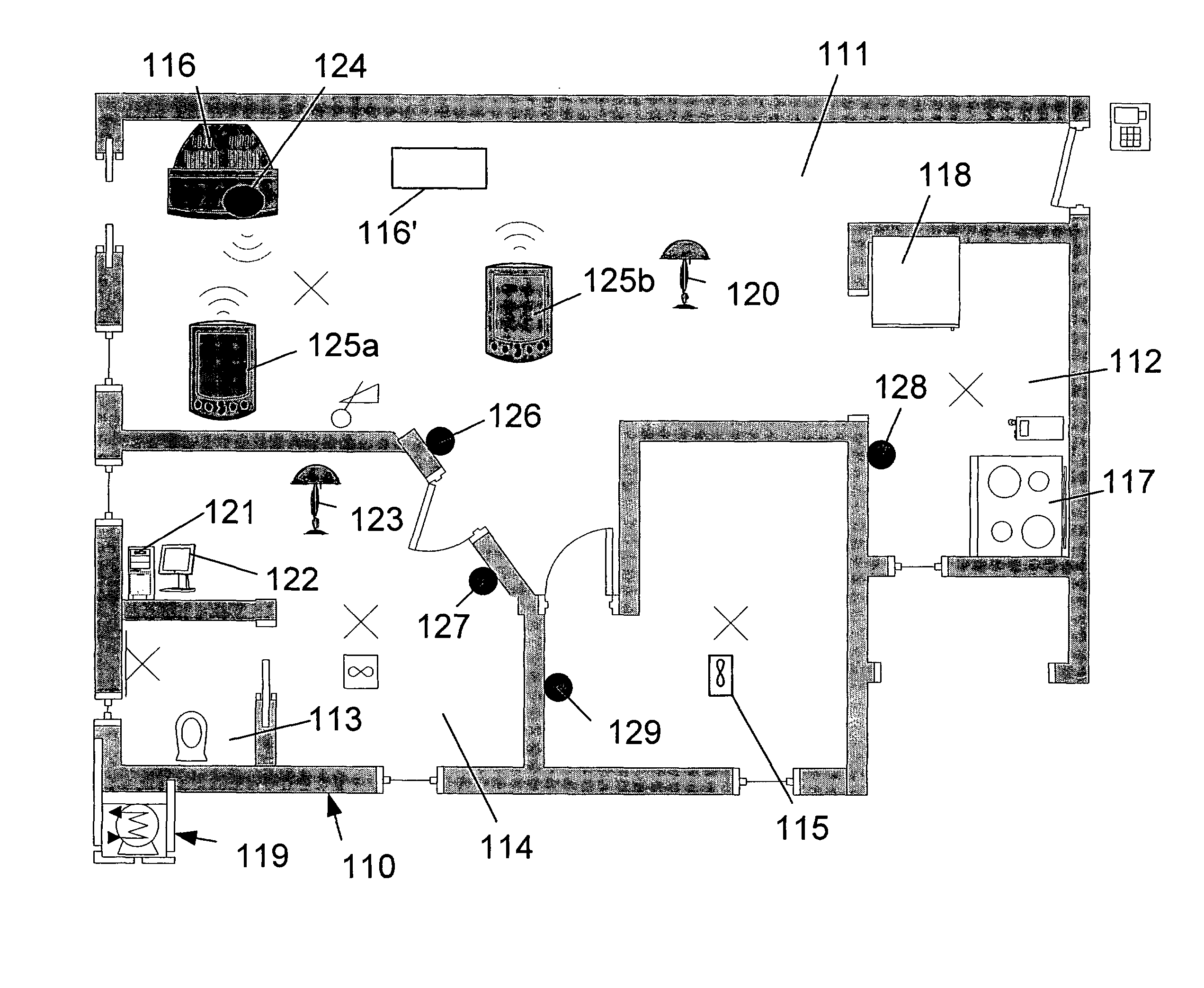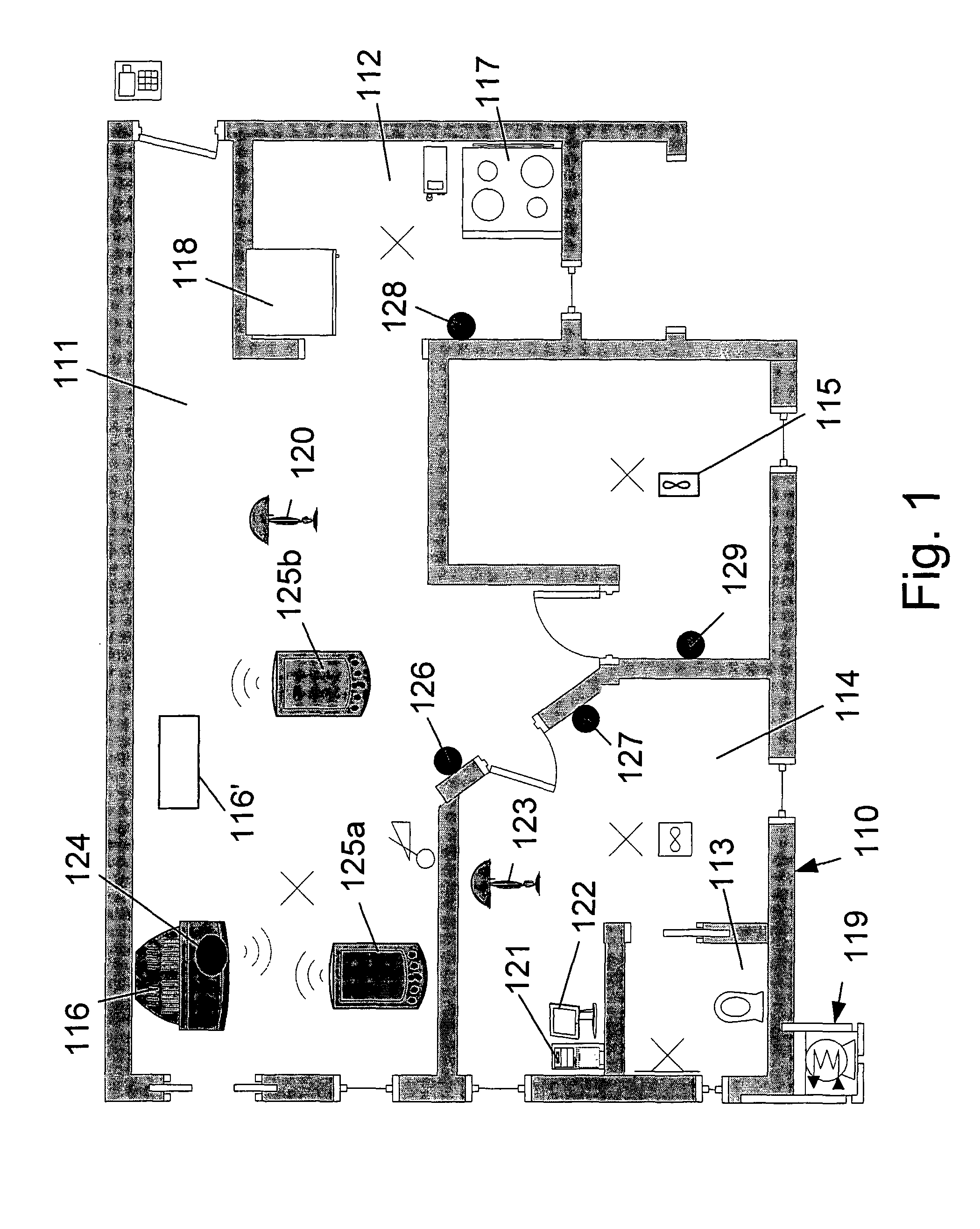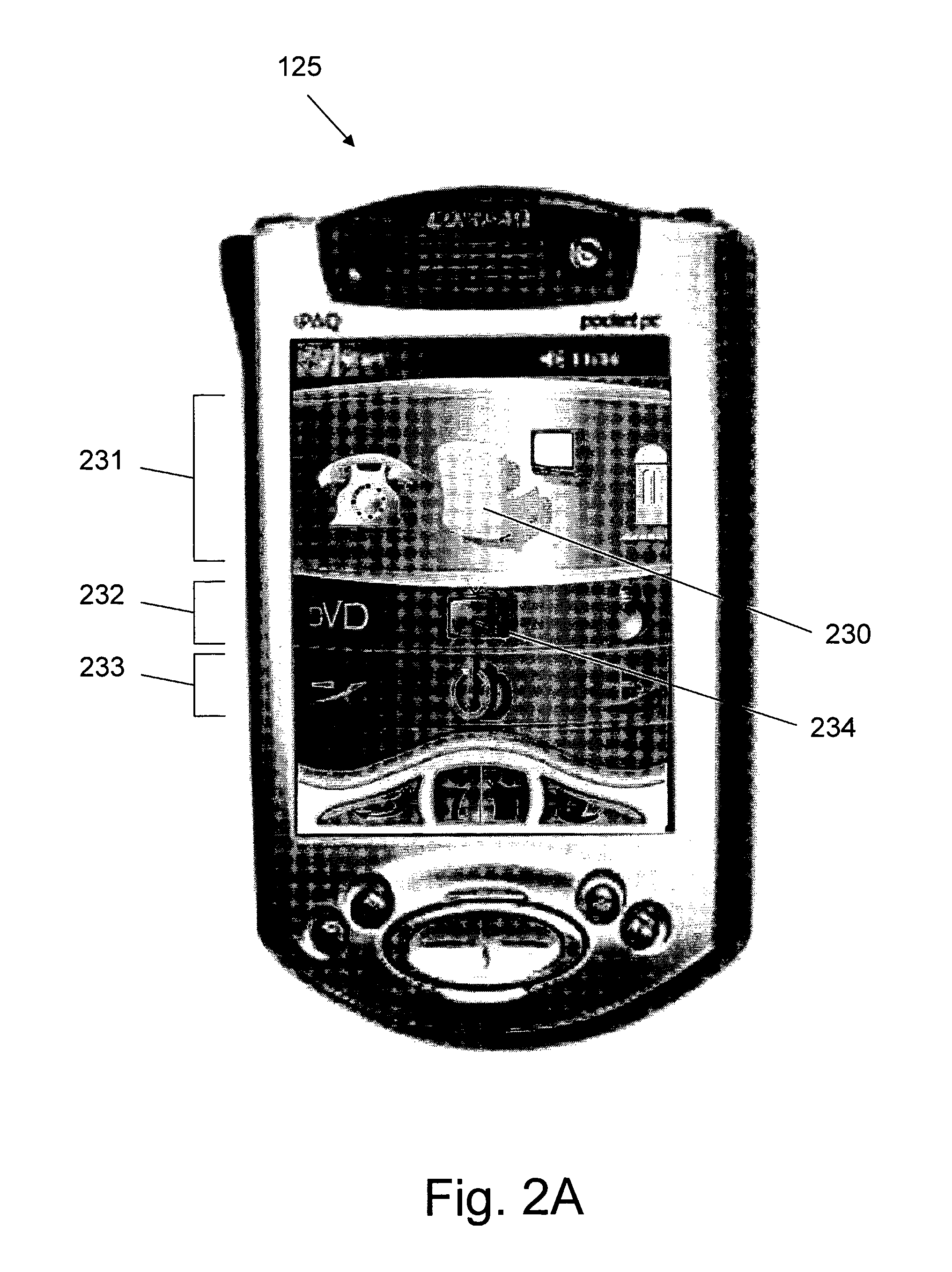Environmental control system
a technology of environmental control and remote controller, which is applied in the direction of electric controllers, ignition automatic control, instruments, etc., can solve the problems of long time lapse, difficult for the operator of such remote controllers to aim a finger, and limited number of conventional hand held remote controllers
- Summary
- Abstract
- Description
- Claims
- Application Information
AI Technical Summary
Benefits of technology
Problems solved by technology
Method used
Image
Examples
Embodiment Construction
[0088]FIG. 1 schematically illustrates an embodiment of the system of the present invention, wherein the user lives and moves in an exemplary flat illustrated at 110 in schematic plan view. Flat 110, being an exemplary environment includes: living room 111, kitchen 112, toilet room 113 and study room 114. Reference numeral 115 denotes a spare room which is empty at the moment and does not contain controllable appliances.
[0089] Living room 111 includes, according to this example, a TV set (116), a DVD (116′) and a lamp 120. Kitchen 112 includes gas stove 117 and dish washing machine 118. Toilet room 113 includes a boiler 119, and study room 114 includes computer 121, computer's monitor 122 and lamp 123. All of the aforesaid appliances are configured to be wirelessly controlled by remote controller 125. Controller 125 is shown in two positions, one position (125a) being directly in front of and close to TV set 116 and the other (125b) being any other position in living room 111.
[009...
PUM
 Login to View More
Login to View More Abstract
Description
Claims
Application Information
 Login to View More
Login to View More - R&D
- Intellectual Property
- Life Sciences
- Materials
- Tech Scout
- Unparalleled Data Quality
- Higher Quality Content
- 60% Fewer Hallucinations
Browse by: Latest US Patents, China's latest patents, Technical Efficacy Thesaurus, Application Domain, Technology Topic, Popular Technical Reports.
© 2025 PatSnap. All rights reserved.Legal|Privacy policy|Modern Slavery Act Transparency Statement|Sitemap|About US| Contact US: help@patsnap.com



